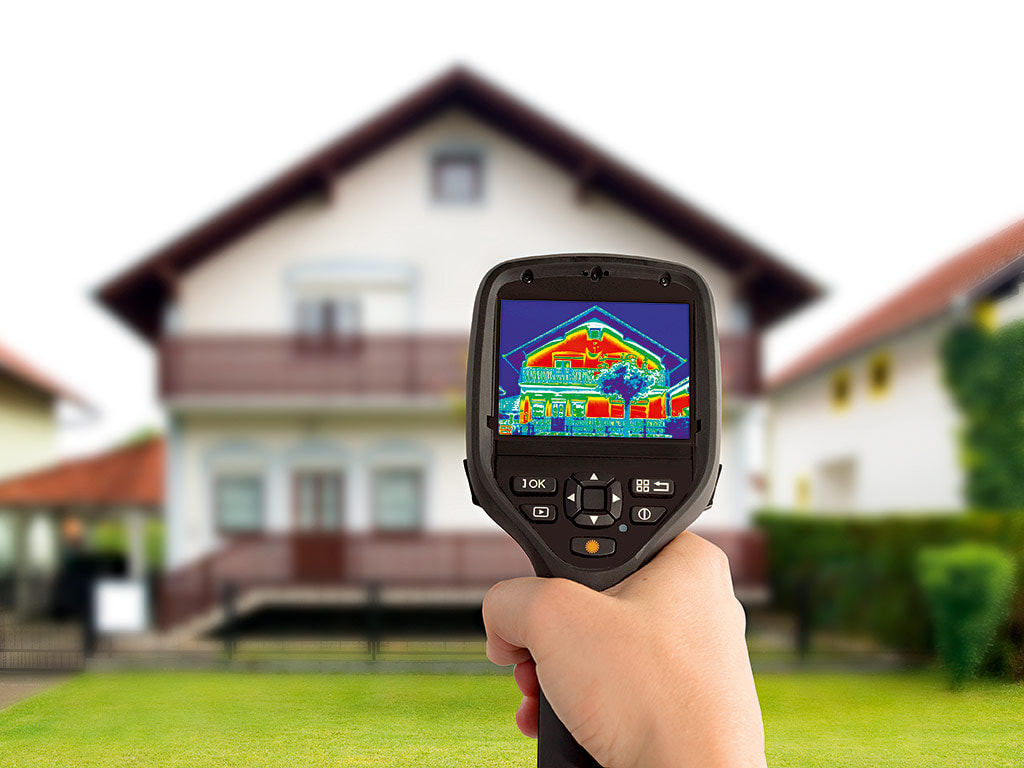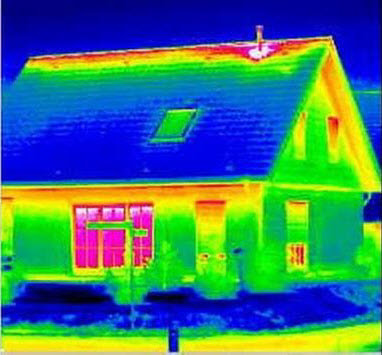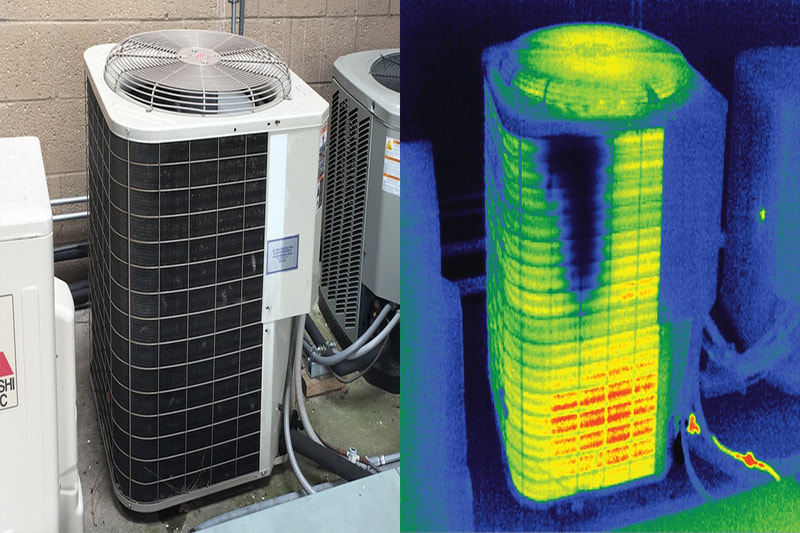Thermal Measurement Inspections
MHBI performs thermal measurement inspections, providing every client with information on potentially many issues within the home that are not visible through a standard inspection. A thermal inspection uses a professional infrared camera to create an visible image of temperature differentials of infrared radiation coming from and measured on a surface.
What is a Thermal Measurement Device
A thermal imaging camera (technically known as a thermographic camera) measures the surface temperature of a non-reflective surface. Reflective surfaces simply reflect back the camera signal, and so are not valid measurements. A thermographic camera is a device that creates an image using infrared radiation, similar to a common camera that forms an image using visible light. Instead of the 400–700 nanometre (nm) range of a visible light camera, infrared cameras detect and measure at a higher range from about 1,000 nm to 14,000 nm.
What can a Thermal Measurement Device Detect
Here are the primary source problems which a thermal camera inspection can locate:
Moisture - A thermal camera can help determine moisture, rainwater, or plumbing leaks which may eventually damage surface and structural components of building. In addition, a continuing moisture or water problem is a draw for mold growth, insects and animals. Since evaporating moisture creates a cooling effect, surface areas with water can typically be seen as cooler in a thermal image.
Animal & Insect Infestations - The presence of pests living inside walls, above ceilings, and in attics and crawl spaces can be detected using a thermal camera, finding small mammals, bees and wasp nests, and sometimes other insects or animals.
Missing Insulation - A thermal camera can locate hotter or colder spots in walls and ceilings which typically are a result of missing, reduced, or fallen insulation. The best times to find these problem areas, which reduce energy efficiency, is in the hot days of summer or the cold days of winter when the temperature differential between inside and outside air is the greatest.
Air Infiltration - Infiltration of unconditioned outside air, or exfiltration (escaping) of conditioned interior air creates an added energy load (and cost) to heat or cool the building, Using a thermal camera can many times find those open areas where air if flowing.
Ducts - While most heating and cooling ducts are behind enclosed walls and ceilings, a thermal camera can many times find air leaks in joints and connections of these systems when and where air flow is escaping.
Heat Pumps - An improperly operating compressor coil can show up in the winter heating months using a thermal camera.
Moisture - A thermal camera can help determine moisture, rainwater, or plumbing leaks which may eventually damage surface and structural components of building. In addition, a continuing moisture or water problem is a draw for mold growth, insects and animals. Since evaporating moisture creates a cooling effect, surface areas with water can typically be seen as cooler in a thermal image.
Animal & Insect Infestations - The presence of pests living inside walls, above ceilings, and in attics and crawl spaces can be detected using a thermal camera, finding small mammals, bees and wasp nests, and sometimes other insects or animals.
Missing Insulation - A thermal camera can locate hotter or colder spots in walls and ceilings which typically are a result of missing, reduced, or fallen insulation. The best times to find these problem areas, which reduce energy efficiency, is in the hot days of summer or the cold days of winter when the temperature differential between inside and outside air is the greatest.
Air Infiltration - Infiltration of unconditioned outside air, or exfiltration (escaping) of conditioned interior air creates an added energy load (and cost) to heat or cool the building, Using a thermal camera can many times find those open areas where air if flowing.
Ducts - While most heating and cooling ducts are behind enclosed walls and ceilings, a thermal camera can many times find air leaks in joints and connections of these systems when and where air flow is escaping.
Heat Pumps - An improperly operating compressor coil can show up in the winter heating months using a thermal camera.
What MHBI Can Do for You
Use of our thermal imaging camera allows MHBI to perform advanced inspections beyond the "visible standard" required by most states and inspector certifying organizations. Thermal inspections are performed for an added fee due to the time it takes to scan the many surface areas of a home or commercial building for thermal anomalies.








